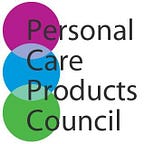Facing Facts on Microbeads
By Dr. Beth Lange, Chief Scientist, Personal Care Products Council
Breathless headlines and anxious social media posts warn us that the plastic microbeads in facial cleansers and toothpaste are polluting the waterways, killing wildlife and even giving us cancer. The soundbites claim that these tiny plastic spheres are causing macro problems.
A new federal law — passed with bipartisan and industry support — bans plastic microbeads in exfoliating products as of next summer. We listened to concerns and acted early with a voluntary phase out even before the law was passed. But critics argue that we can’t afford to wait. They insist microbeads pose a real and imminent threat to marine life and to humans via the food chain.
Except that’s not what the science shows. Not even close. In fact, the case against microbeads is built on speculation, cherry-picked from a small and preliminary body of research to fit an advocacy agenda. What we need to address the problem of marine litter is a focus on the real primary sources.
Here are the myths you’ve probably heard about microbeads, and the facts that dispel them.
MYTH: “Microbeads from personal care products are major sources of the plastic pollution in oceans and other waterways.”
Modern science says otherwise. By far, the largest source of microbeads is not personal care products, but industrial beads used for manufacturing — which are not included in the ban. Quantitative research by independent academics, NGOs and governments around the world consistently find that microbeads overall are tiny contributors to microplastic marine debris — as little as half of one percent of the total amount. These studies also identify the major sources of microplastic marine litter as textile fibers, tire dust washed from roadways, and the breakdown of plastic packaging such as bags and bottles.
MYTH: “Microbeads cannot be filtered out of waste treatment plants.”
Actually, they can and they are. Based on a study published this year by water quality experts in California, 99.9 percent of microbeads that are washed down drains are removed by waste treatment plants. Another study found 90 percent removal.
MYTH: “Microbeads are eaten by marine wildlife, harming them.”
There is no validated, peer-reviewed scientific evidence that cosmetic microbeads cause harm to the environment or wildlife.
One study showed some injury to oysters in a lab by force-feeding them unrealistically large amounts of microbeads made of polystyrene, which is not even used to make cosmetic exfoliating microbeads. An independent review of existing data published in Environmental Science and Technology concluded that microplastics do not increase exposure of wildlife to harmful pollutants and toxins do not build up in the food chain. The review also found that laboratory experiments often use far higher amounts of microplastics than marine animals are actually exposed to and that the vast majority of experiments failed to simulate what really occurs in the environment.
MYTH: “Consumers should avoid all personal care products containing any kind of microplastics.”
There is no health or environmental reason to do so. In addition to hard plastic microbeads, manufacturers use a variety of ingredients in the form of soft microplastic particles, which are smaller and are inseparable from the products. These ingredients have been found safe by regulators and are used by many other industries, including in medicines and food. Many of the attributes of cosmetics that consumers enjoy and rely on come from these microparticles such as smooth application, water resistance and a long shelf life. Any possible contribution of these microparticles to marine litter is extremely low compared to other sources.
The decision to phase out plastic microbeads was a responsible approach by industry to consumer concerns; it was not driven by science. We are committed to finding real solutions to microplastic litter, which will take much more research and a focus on the primary sources. Attacks against plastic ingredients in cosmetics and personal care products will have, at most, a micro impact on the macro problem.
